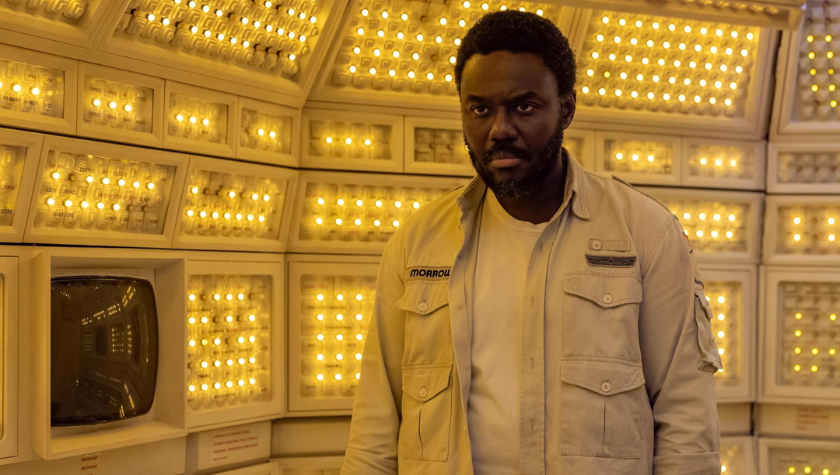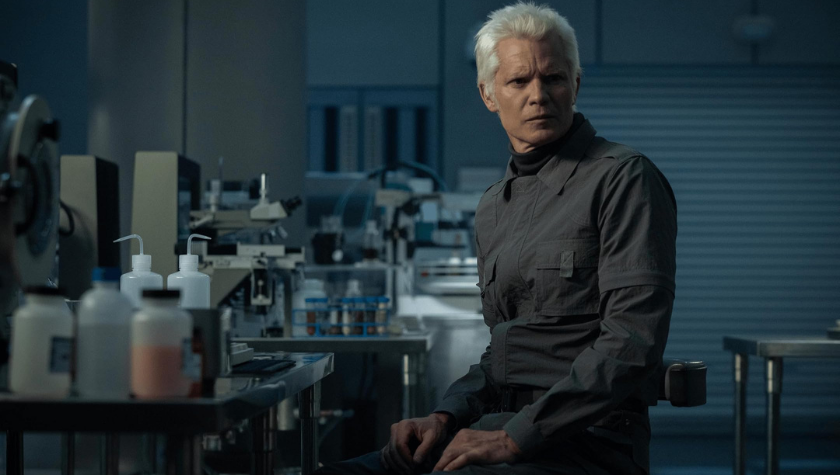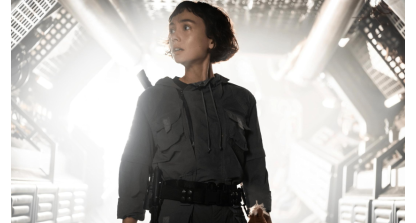There seems to be something unique about the 1970s. The decade was filled with political turmoil, the ending of the Vietnam War, global instability, government scandals and a hostage crisis in Iran. There were plenty of monsters in the newspapers, but audiences preferred our monsters on the movie theater screen. Science fiction had been mostly B-movie Roger Corman stories where rubber-suited creatures terrorized unsuspecting humans. Star Wars proved that people wanted more from their space adventures, while Jaws showed that audiences love to be scared.
It’s no wonder that by 1979, a science fiction horror film with the tagline “In space no one can hear you scream” that cost only $11 million became a hit with nearly $80 million at the box office. It was essentially Jaws in space.
Alien scared audiences with the xenomorph alien that looks perpetually pissed off, has razor sharp teeth and drools/spits acid. Today’s audiences know what this alien can do; they’ve seen it in several sequels and prequels. So why create another tale about the xenomorph?
That question was answered with Noah Hawley’s creation of Alien: Earth, an FX series about a spaceship that crash lands on earth and the people, corporations and variations of cyborgs, synths and hybrids who must deal with this threat.
But a series must go deeper than a 2-hour movie, and Hawley had to build a world with characters that audiences would want to follow. He needed something more than bodies for that same ol’ xenomorph to kill (again!).
Building an Undefined Future
Science fiction focuses on the future, which often leans dystopian. This genre is as much about warnings as it is entertainment. Soylent Green warned about both a climate and population crisis. Planet of the Apes was a flashing red light on nuclear proliferation. And The Terminator is about what happens when AI and advanced technology becomes self-aware.
But movies and TV shows shouldn’t be lectures, but rather entertaining metaphors.
Alien: Earth envisions a planet run by 5 corporations in control of specific zones. The owner of one of those corporations just happens to be an eccentric, young trillionaire who has the ability to implant a mind into a synthetic being. In the first episode, the viewer sees how a young girl on the cusp of dying can continue living in a different body, one that won’t age. Essentially, this innovator has cured death.
Meanwhile a spaceship carrying several live and deadly specimens from other planets is cruising through space until it crash lands on earth, where, one can suspect, these aliens will start wreaking havoc.
Hawley sets up a world that recognizes that humans are submitting to technology, and fighting what’s natural.
“It started with raising kids in a world where the natural world is starting to turn on us, and the technology we’ve created might turn on us as well,” Hawley says in The Playlist. “When asked if I had any ideas for Alien, I thought that’s what Alien is about - it’s about the primordial monsters of our past trying to kill Sigourney Weaver, and the A.I. future that’s also trying to kill her. Humanity is trapped between the A.I. future and the monsters of the past.”
When world building, especially in Sci-Fi, nothing is safe or sacred, and black and white doesn’t exist. The same technology that cures can also hurt, and the creators of the technology can use it for good or evil, or both.
Hawley recognized this in the original Alien, and created a world where his story can take place alongside the original film. On top of that, TV and movies are set in “a” world and not necessarily set in “our” world. This gave Hawley the ability to have advanced technology that can create synthetic beings, spaceships that travel deep into space, and a planet controlled by a handful of corporations, while also using computer graphics similar to the original film from 1979.


The Slow Set Up
Alien: Earth takes its time setting up the characters on the spaceship, the introduction to Wendy (Sydney Chandler), who plays the synth whose brain the sick girl inhabits, and Joseph (Alex Lawther), her brother who is also a medic helping search and rescue once the spaceship crashes. Of these three storylines, Hawley spends about 15 uninterrupted minutes on each. The xenomorph is rarely seen, which is on purpose because this is a TV series, not a monster movie.
“I’m not worried about the monsters—when we put them in, that’s the money-back guarantee,” Hawley says in The Playlist interview. “We had to create human drama, with many human monsters as well, and explore issues about our world projected into the future.”
The slower setup allows the viewer to get involved in the lives and stories that will encompass the world of Alien: Earth. If you’ve ever told someone you didn’t watch The Walking Dead because you don’t like zombies, you’ve likely been met with the argument that it’s more about the people trying to survive and live than the actual zombies. The same holds true for Alien: Earth: it’s about the characters more than the monster.
Finding Originality in a 45+ Year-Old Movie Franchise
“My job in reinventing these classic films is to figure out, what are the series of feelings that the original makes me feel? And then, how do I make you feel those same feelings?” Hawley says in a Hollywood Reporter interview. “The reality is I cannot make you feel the life cycle of this creature for the first time again because you know it so well, this evolution that it’s really four monsters and one. And it’s a parasite. Every step of the way is worse than the last.”
After the original Alien, audiences knew what the xenomorph could do. It was no longer a question of its capabilities but how the humans we see will interact with it. From the first moments aboard the spaceship, Hawley lets the viewer know that there is more than just the xenomorph that’s going to cause trouble.
“The only way to make you feel that terrible discovery is to add new creatures,” Hawley shares with the Hollywood Reporter. “You get this dread that comes every time they’re on screen where you’re like, ‘I know something’s going to happen. I don’t know what it’s going to be.’ And then when it happens, it’s worse than you could have imagined.”
This is how Hawley keeps the Alien franchise fresh – it’s introducing the unexpected in a world that has familiarity.
Corporations are the Enemy
Greedy, power-hungry corporations may seem novel but they’ve been around forever. 1970s cinema was filled with them: Rollerballer, Alien, Soylent Green and The Parallax View, to name a few. In Alien: Earth, countries no longer exist, and are merely massive territories owned by corporations. It’s the perfect setup for a modern-day version of an Alien story, and Hawley uses it as the foundation for how the elite and blue collar workers engage with one another as well as the aliens. This matches the tone of the original Alien, which follows a group of blue collar workers aboard a spaceship essentially doing what their employer wants them to do.
Evil corporations are timeless because it represents the struggle of a common person fighting against something bigger and stronger than they are, or David vs. Goliath. It also works with tyrannical government (The Hunger Games), school with teachers, principals or bullies (The Breakfast Club) or sports (Rocky).


The Responsibility of Sci-Fi
“My responsibility in bringing Alien to the small screen is to create a vision of the future where the characters work through what it means to be human and whether humanity can survive its own sins—maybe bringing some optimism to the world,” Hawley says in a Hollywood Reporter interview.
As much as Hawley wants Alien: Earth to be fun and entertaining, he believes “science fiction has a responsibility to look at the issues we’re wrestling with on Earth and envision a future where we can solve them.”
There’s a reason that movies about conspiracies, corporations and technology were prevalent in the 1970s. Alien: Earth has arrived under similar circumstances.

